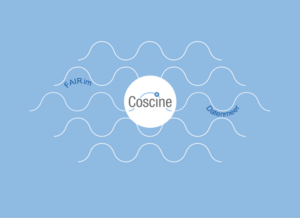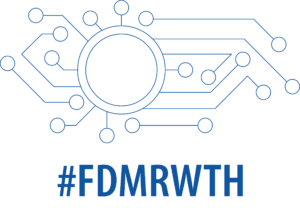We continue with the follow-up report on the afternoon program of the Research Data Day 2022 held at the RWTH Aachen University. Just as last year, researchers from all over North Rhine-Westphalia were allowed to get a taste of the Coscine workshop and ask their questions about the platform for research data management. In this post, we have summarized the contents of the one-hour workshop for you. You can download the slides of the workshop on Zenodo.
Welcome
The goal of the workshop was to present the platform and its features, as well as how it can be used by researchers, data stewards, and RDM interested parties. A special dedication was given to the FAIR principles as well as the good scientific practice that can be followed with the help of Coscine. It was also possible to create space for questions and exchanges.
At the beginning of the workshop, the IT service manager of Coscine Dr. Ilona Lang welcomed the approximately 70 participants and thanked them for their keen interest in the platform. Finally, the presentation about Coscine continued.
What does Coscine do for the FAIR principles?
FAIR handling of research data is not necessarily a given in research. Only a small fraction, if any, of a project’s research data is handled according to FAIR principles when it is published. In the process, a significant amount of valuable (metadata) information is lost. Our solution here is Coscine: a data storage environment that implicitly implements the FAIR principles.
Where does Coscine fit in the research data lifecycle?
In the research data lifecycle, Coscine can be placed in any phase.
Plan: plan project metadata & invite project team
Production: upload metadata and data (automatically)
Analysis: download project data (automatically)
Preservation: archive data and metadata
Access: share PID(s) & invite externals to the project
Re-Use: find data using the internal metadata search function
Coscine’s project structure provides easy research data management and access to free storage. Here, Coscine is not the hard drive itself where the data is stored, but provides access to various storage spaces such as Research Data Storage (RDS) and Linked Data. In the future, other resources such as Sciebo, Nextcloud and GitLab will also be added.
Collaboration in a research project can be greatly simplified with the help of Coscine, as all project members have access to the data. Metadata is automatically linked to data, no matter where it resides, thanks to Coscine. Furthermore, with the integration of the application profile generator from AIMS (Applying Interoperable Metadata Standards), individual, project-specific application profiles can be created. Finally, the data can be archived on the RDS ten years after the end of the project.
Coscine – Live Demo
After clarifying the participants’ questions about archiving, Dr. Ilona Lang gave a live demonstration of the first steps on the platform. She showed the different login variants (login via SSO and ORCID) as well as how to fill in the personal data in the user profile. In the case of a login via SSO, the personal data is already entered automatically. However, when logging in via ORICID, this data has to be entered subsequently by the user. After the user profile, the project level in Coscine was introduced. In the project settings, the first mandatory level of metadata has been continued. In the user administration there is the possibility to search for persons and to invite members.
The next step was the quota management. Different resources can be added here. Dr. Ilona Lang first presented this using the example of a web resource. In the first step, a resource type is selected. In the second step, the generic metadata of the resource (title, discipline, etc.) is specified. In step 3, an application profile is selected that specifies the metadata for the research data. If no existing profile fits, an own profile can be created and saved using the application profile generator. The fourth step provides an overview of all information. The resource can then be created and files added.
Another example followed with the demonstration of the S3 resource. Here, the S3 credentials are provided directly. Storage space on this resource type must therefore be requested through a quota request.
Detailed instructions can be found in the Coscine documentation.
Summary – So what makes Coscine FAIR?
With the help of login via SSO and ORCID, institutional boundaries are overcome, making research data accessible and reusable.
Metadata is captured at the project and resource level and automatically linked to research data and can be made publicly available within Coscine. They are also searchable via ElasticSearch. Technical representation and validation is done via the W3C standards RDF and SHACL. Additionally, connectivity to the NFDI4Ing metadata hub is planned via “FAIR Digital Object” interfaces. All these aspects contribute to making research data findable and interoperable.
The application profile generator AIMS allows the creation of profiles with individual and discipline-specific metadata, which means that no technical knowledge is required (RDF and SHACL). This makes research data finable and interoperable.
Various resource types make it possible to store research data. Among others, there is access to the consortial object storage system RDS (Web, S3, WORM). There, a retention and archiving period of ten years is guaranteed. With the help of Linked Data, externally stored research data can be linked. As a result, the research data is reusable.
Using handle-based ePIC persistent identifiers, the storage locations of the research data can be uniquely and permanently identified and referenced on a global level. Furthermore, fragment identifiers for individual files are enabled by extended handle URL. This makes the research data findable.
For RDS resources, interaction is possible via browser, S3 protocol or REST API depending on the resource type. The REST interface makes data and metadata independently finable and accessible. The ease of entering data and metadata into the system facilitates subsequent use. In addition, the interface enables workflows to be automated. Thus, research data is made finable and accessible.
Conclusion
The active participation in the workshop as well as the important questions asked in it allowed for an interesting discussion and many insights into the functions of Coscine. In particular, people who do not yet use Coscine were able to take the opportunity to be guided live through the platform and to get a taste of it.
We would like to thank all participants for their interest in Coscine and the resulting successful exchange with each other.
Learn more
You don’t want to miss any news about Coscine? Then subscribe to our mailing list and visit us on our website.
Do you have any questions or feedback? Then write a message to the IT-ServiceDesk. We are looking forward to your message!
______
Responsible for the content of this article is Arlinda Ujkani.







Leave a Reply
You must be logged in to post a comment.